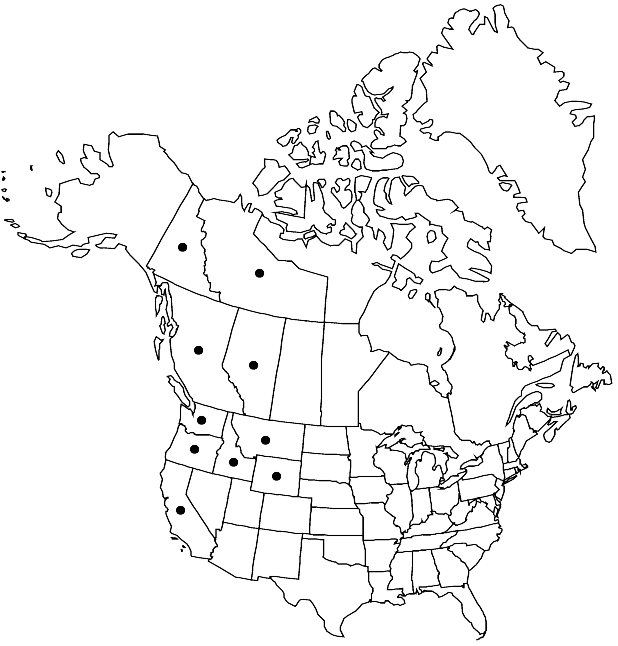Difference between revisions of "Boechera calderi"
Harvard Pap. Bot. 11: 259. 2007.
FNA>Volume Importer |
FNA>Volume Importer |
Revision as of 20:22, 24 September 2019
Perennials; usually short-lived; apomictic; caudex not woody. Stems usually 1 per caudex branch, arising from center of rosette near ground surface, 1–4.5 dm, glabrous throughout. Basal leaves: blade oblanceolate, 1.5–6 mm wide, margins entire, ciliate at petiole base, trichomes to 0.8 mm, surfaces sparsely pubescent, trichomes sessile, malpighiaceous (usually at margin) and 3- or 4-rayed, 0.15–0.4 mm. Cauline leaves: 5–17, often concealing stem proximally; blade auricles 1–3 mm, surfaces of distalmost leaves glabrous. Racemes 10–25-flowered, unbranched. Fruiting pedicels erect, straight, 5–10 mm, glabrous. Flowers erect at anthesis; sepals glabrous; petals purple, 6–9 × 1.5–2.5 mm, glabrous; pollen spheroid. Fruits erect, appressed to rachis, not secund, straight, edges parallel, 3.5–6.5 cm × 1.8–2.5 mm; valves glabrous; ovules 64–134 per ovary; style 0–0.2 mm. Seeds biseriate to sub-biseriate, 1.8–2.2 × 1–1.8 mm; wing continuous, 0.2–0.5 mm wide.
Phenology: Flowering Jun–Aug.
Habitat: Exposed rocky ridges, meadows, open forests near timberline
Elevation: 1500-3500 m
Distribution

Alta., B.C., N.W.T., Yukon, Calif., Idaho, Mont., Oreg., Wash., Wyo.
Discussion
Morphological evidence suggests that Boechera calderi is an apomictic species that arose through hybridization between B. lyallii and B. stricta (see M. D. Windham and I. A. Al-Shehbaz 2007 for detailed comparison).
Selected References
None.